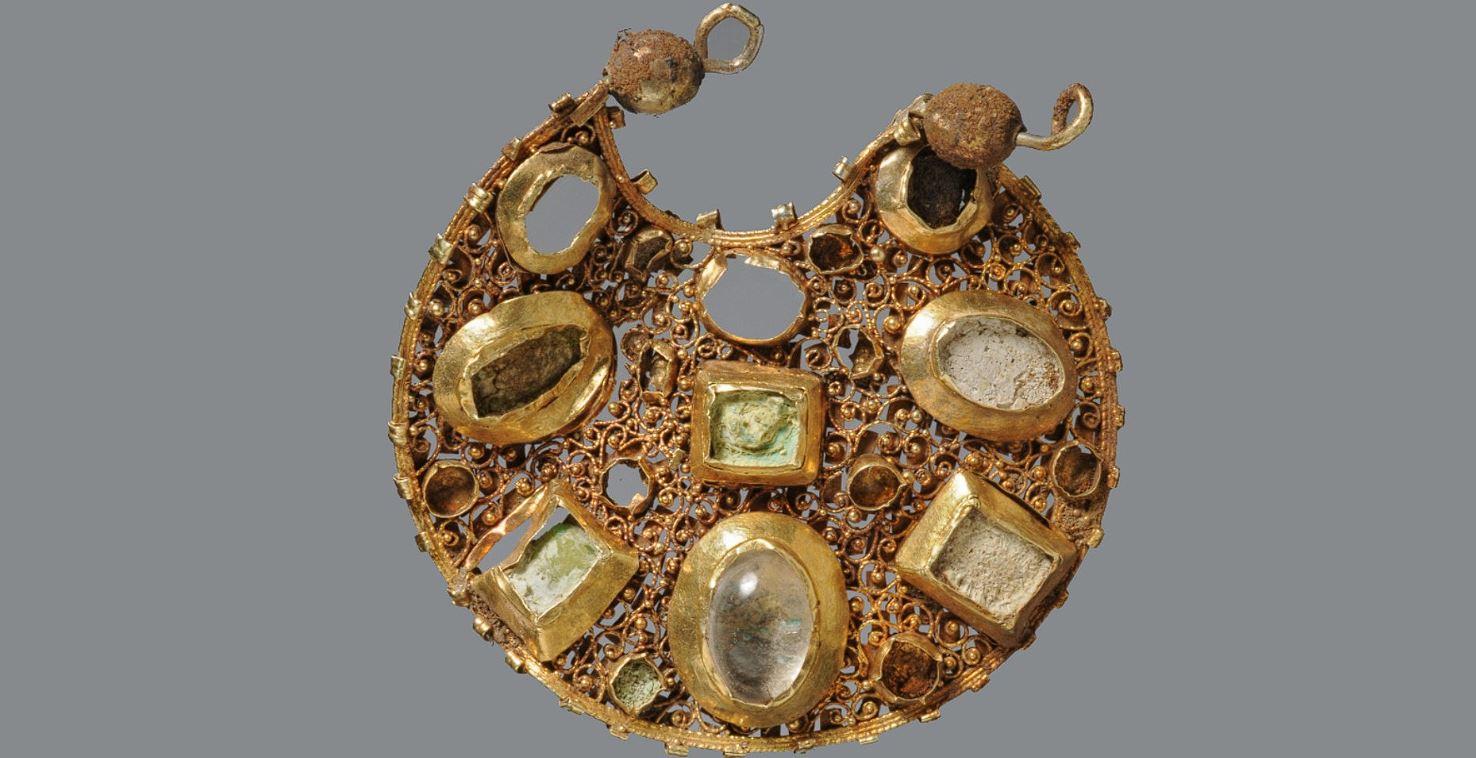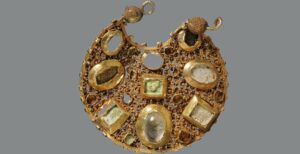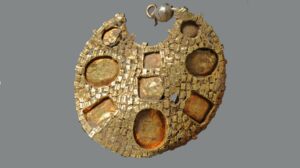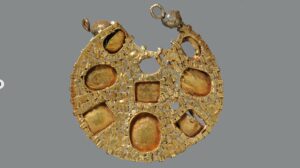A trainee metal detectorist in northern Germany recently hit on something his mentor never expected: an 800-year-old hoard of gold jewelry and silver coins that hints at the area’s trade connections.
Perhaps the most remarkable items in the hoard are the two earrings. “They probably date to the time around and after 1100 and are in the tradition of Byzantine goldsmiths,” Ickerodt, director of the State Archaeological Department of Schleswig-Holstein said.
The large hoard contained a dazzling collection of artifacts. “The hoard consisted of two very high quality gold earrings set with semi-precious stones, a gilded pseudo-coin brooch, two gilded stone-studded finger rings, a ring fragment, a small formerly gilded perforated disc, a ring brooch, and about 30 silver coins, some of them heavily fragmented,” Ulf Ickerodt told Live Science in an email.
For decades, amateur and professional archaeologists have been working together to investigate the region of Schleswig-Holstein, and in particular the UNESCO world heritage site of Haithabu(opens in new tab). Known as Hedeby in Danish, the site was the second-largest Nordic town and was important to the Vikings between the eighth and 11th centuries. Haithabu was destroyed and abandoned around 1066, ending the Viking era in the region, but a century or two later someone purposefully buried the bag full of valuables nearby.
more at livescience.com
image credit State Archaeological Department of Schleswig-Holstein
Ask me anything
Explore related questions








